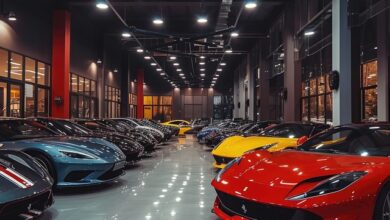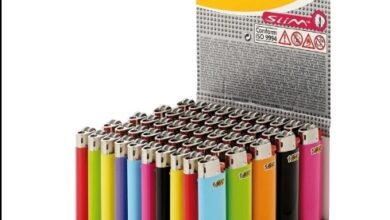In today’s world, lighting plays a crucial role in enhancing our surroundings, improving visibility, and creating ambience. With the advent of LED (Light Emitting Diode) technology, the landscape of lighting has undergone a significant transformation. In this comprehensive guide, we’ll explore the various aspects of LED lighting solutions, from their benefits and applications to tips for choosing the right fixtures and optimizing energy efficiency.
- Understanding LED Technology:
- LED technology utilizes semiconductor diodes to produce light when an electric current passes through them. Unlike traditional incandescent or fluorescent bulbs, LEDs do not rely on heating a filament or gas to generate light, making them more energy-efficient and durable.
- LED bulbs consist of multiple small LEDs packaged together, allowing for greater flexibility in design and application. They emit light in a specific direction, resulting in less wasted light and improved efficiency compared to traditional bulbs.
- Benefits of LED Lighting:
- Energy Efficiency: LED lighting is highly energy-efficient, consuming up to 80% less energy than traditional incandescent bulbs. This translates to significant cost savings on electricity bills and reduced carbon emissions.
- Long Lifespan: LED bulbs have an exceptionally long lifespan, typically lasting tens of thousands of hours before needing replacement. This reduces the frequency of bulb replacements and maintenance costs over time.
- Durability: LED bulbs are more durable than traditional bulbs, as they are not susceptible to filament breakage or glass shattering. They are resistant to shocks, vibrations, and temperature fluctuations, making them ideal for use in rugged environments.
- Instantaneous Lighting: LED bulbs illuminate instantly when switched on, unlike some traditional bulbs that require time to reach full brightness. This instantaneous lighting is convenient and improves safety in areas where immediate illumination is needed.
- Design Flexibility: LED lighting offers design flexibility, with a wide range of shapes, sizes, and colours available to suit various applications and aesthetics. From standard A-shape bulbs to decorative filament bulbs and colour-changing RGB strips, there’s an LED lighting solution for every need and preference.
- Applications of LED Lighting:
- Residential Lighting: LED lighting is widely used in residential settings for general lighting, task lighting, accent lighting, and decorative purposes. Common applications include recessed downlights, pendant lights, track lighting, under-cabinet lights, and landscape lighting.
- Commercial Lighting: LED Ceiling lighting is also prevalent in commercial and industrial settings, where energy efficiency, durability, and long lifespan are paramount. LED fixtures are used in offices, retail stores, warehouses, factories, parking lots, and street lighting.
- Architectural Lighting: LED technology allows for creative architectural lighting designs that enhance the aesthetic appeal of buildings and outdoor spaces. LED strips, wall washers, and facade lighting fixtures can highlight architectural features, illuminate signage, and create dynamic visual effects.
- Automotive Lighting: LED lighting has become increasingly popular in automotive applications, including headlights, taillights, brake lights, and interior lighting. LED headlights offer improved visibility and safety on the road, while LED taillights provide instant illumination and enhance vehicle aesthetics.
- Choosing the Right LED Fixtures:
- When selecting LED fixtures for your home or business, consider factors such as the desired lighting effect, the size and layout of the space, and your budget. Determine whether you need general lighting, task lighting, accent lighting, or decorative lighting, and choose fixtures accordingly.
- Pay attention to the color temperature and CRI (Color Rendering Index) of LED bulbs, as these factors affect the quality of light emitted. Warm white (2700K-3000K) is suitable for creating a cozy ambience, while cool white (4000K-5000K) is ideal for task-oriented areas.
- Evaluate the brightness of LED bulbs in lumens, rather than wattage, to ensure they provide adequate illumination for your needs. Consider dimmable LED bulbs for areas where adjustable lighting levels are desired, such as living rooms, bedrooms, and dining rooms.
- Look for LED fixtures with ENERGY STAR certification or high energy efficiency ratings to maximize energy savings and minimize environmental impact. Choose reputable brands and products with reliable warranties to ensure quality and performance.
- Consider the installation requirements and compatibility of LED Ceiling Lighting fixtures with existing wiring and electrical systems. Consult with a qualified electrician if you’re unsure about installation procedures or need assistance with wiring and mounting.
- Optimizing Energy Efficiency with LED Lighting:
- LED lighting offers numerous opportunities to optimize energy efficiency and reduce electricity consumption in your home or business. Implement the following strategies to maximize energy savings and environmental sustainability:
- Replace outdated incandescent or fluorescent bulbs with energy-efficient LED bulbs throughout your home or business.
- Install motion sensors, timers, or smart lighting controls to automatically turn off lights when not in use and adjust lighting levels based on occupancy and daylight levels.
- Take advantage of natural daylight by incorporating daylight harvesting techniques and optimizing window placement and shading to reduce reliance on artificial lighting during the day.
- Retrofit existing lighting fixtures with LED upgrades or replacements to improve energy efficiency and longevity without the need for major renovations or replacements.
- Educate occupants and employees about energy-saving practices and encourage them to turn off lights when leaving rooms, use task lighting instead of overhead lighting when possible, and take advantage of natural light whenever available.
- LED lighting offers numerous opportunities to optimize energy efficiency and reduce electricity consumption in your home or business. Implement the following strategies to maximize energy savings and environmental sustainability:
- Common Questions and FAQs about LED Lighting:
- Q: Are LED bulbs more expensive than traditional bulbs?
- A: While LED bulbs may have a higher upfront cost than traditional bulbs, they offer significant cost savings over time due to their energy efficiency and long lifespan.
- Q: Can LED bulbs be used with dimmer switches?
- A: Many LED bulbs are compatible with dimmer switches, but it’s essential to choose dimmable LED bulbs specifically designed for dimming applications to ensure compatibility and optimal performance.
- Q: Do LED bulbs emit heat?
- A: LED bulbs produce significantly less heat than traditional incandescent or halogen bulbs, making them safer to touch and reducing the risk of fire hazards or burns.
- Q: Are LED bulbs more expensive than traditional bulbs?
- Conclusion:
- LED lighting has transformed the way we illuminate our homes, businesses, and outdoor spaces, offering energy efficiency, durability, and versatility. By understanding the benefits and applications of LED lighting, choosing the right fixtures, and optimizing energy efficiency, you can create a well-lit and environmentally sustainable environment that enhances productivity, comfort, and aesthetics. Embrace the bright future of LED lighting and illuminate your space with efficiency, innovation, and style.



